Are you interested in learning about blockchains, cryptocurrencies, and decentralized apps (DApps)? Have you always wondered what web3 project ideas would look like? Then, this guide can help you “kickstart” that journey and serve as an introduction to this new and rapidly evolving space.
In the world of computer science and technology, web has become an area of deep research and innovation. Organizations from tech companies to financial services have shown interest in blockchains, cryptocurrencies, and the movement toward a decentralized Internet. Similarly, many developers like you have seen news, trends, and projects that use these web3 technologies.
Like the concept of Web3? Join BeInCrypto Trading Community on Telegram with like-minded people: share your experience, discuss and read all the hottest news on Web3. Join now
The following web3 project ideas serve as a good starting point for those looking to find a career in the web3 industry. But first, let’s look at some basics.
If you are searching for a wallet supported by Web3 – try ZenGo. You can get a $10 bonus for inviting friends. All you need is to create a blockchain wallet on ZenGo using THIS LINK and share your personal promo code that can be found in Settings in ZenGo mobile app with friends. Once your friend buys $500+ worth of crypto both of you will get $10 bonus.
In this guide:
Getting started
Tools and frameworks to be familiar with
These are some of the essential and “nice-to-know” tools and programming languages that you may want to be familiar with to better plan how you can build these projects. Quickly skim through introductory pages or tutorials on any of these tools to know what their major features are:
Essentials
- Basic HTML, CSS, and JavaScript (the big front-end languages of Web2)
- Solidity (a programming language for building smart contracts)
- Web3.js and Ethers.js (JavaScript libraries that enable front-end apps to interact with the Ethereum blockchain)
- Remix (a web3 Integrated Development Environment / IDE)
Nice-to-know
- Truffle and Hardhat (web3 frameworks)
- OpenZeppelin (a smart contract library that creates tools for web3 engineers)
- A basic understanding of the Ethereum Virtual Machine (EVM), how it compiles code, and how it differs from virtual machines that you know like VMWare or the Java Virtual Machine (JVM)
Common web3 use cases
Additionally, learning about different web3 use cases can help you have a better picture of what the world of web3 project ideas look like. These use cases include:
- Decentralized Autonomous Organizations (DAOs): member-owned communities without a centralized leadership
- Non-fungible tokens (NFTs): unique digital and cryptographically secure tokens that exist on a blockchain
- Decentralized Finance (DeFi): a category of emerging financial technologies that remove third parties like banks and institutions in financial transactions
- Privacy and digital infrastructure: innovative facets of cryptography, complete transparency, and improving users’ personal data
- Blockchain games: video games that include elements that use cryptography-based blockchain technologies. Play-to-Earn (P2E) games are good examples.
- Metaverse: a digital reality that combines aspects of social media, online gaming, augmented reality (AR), virtual reality (VR), and cryptocurrencies to allow users to interact virtually
- Creator economy: emerging creator communities for developers, artists, musicians, followers, and supporters
A summary of all 12 Web3 project ideas
| Item | Project | Difficulty | Outcome |
| 1. | “Hello, world!” | Beginner | An intro smart contract that prints out “Hello, world!” |
| 2. | Simple storage smart contract | Beginner | A smart contract that can read, write, increment, and decrement a variable’s value |
| 3. | Cheese touch | Beginner | A non-fungible token (NFT) DApp where players can pass around a live “cheese touch” token |
| 4. | Event staking | Beginner | A smart contract that allows confirmed attendees to share in a pool reward |
| 5. | An Ether wallet containing ERC20 tokens | Beginner | An Ether wallet and ERC20 token personalized and made from scratch |
| 6. | Web3 to-do list | Intermediate | A to-do list DApp where each item and task is a block on a blockchain |
| 7. | A mission-driven DAO | Intermediate | A small decentralized autonomous organization (DAO) around your favorite cause |
| 8. | A multi-send smart contract that sends 1-hour “salary” tokens | Intermediate | A smart contract that sends to multiple Ethereum addresses tokens that represent an employee’s time |
| 9. | Polling or voting system | Intermediate | A decentralized and comprehensive web app for polling, voting, registration and security |
| 10. | NFT collection dashboard using Covalent’s ready-made template | Beginner | An NFT analytics dashboard that displays your favorite collectibles |
| 11. | XY=K DEX dashboard using Covalent’s ready-made template | Beginner | A decentralized exchange (DEX) analytics dashboard that displays your portfolio of decentralized exchanges |
| 12. | Custom data feeds for smart contracts using Covalent’s API | Intermediate | A custom data feed oracle using Chainlink and Covalent |
Beginner-level Web3 projects
Begin your journey into building web3 DApps and tokens and learning the different web3 programming tools and frameworks with these projects.
1. “Hello, world!”

Motivation
If you have ever attended a beginner class introducing Computing Science and programming concepts, you may have remembered the “Hello, world!” program written in either Python, C++, or another beginner-friendly programming language. Similar to this first code snippet that you have learned, this teaching guide starts off with the “Hello, world!” smart contract.
Project description
Write a simple smart contract (a piece of code written in Solidity) that prints out “Hello, world!” This project is one of a few good ideas that will help you to start your journey into web3. You will learn how to program in Solidity, the dominant language used by web3 smart contract developers.
Even if the idea is simple, writing this can teach you the basics of creating a blockchain project (Hint: The code is not as simple as a main function that prints out “Hello, world!”). It can teach you the layout of a Solidity file, how to declare contracts and functions, and other fundamental features of the language.
Start here
Take a look at Ethereum’s comprehensive tutorial on creating the “Hello, world” smart contract:
Hello World Smart Contract for Beginners – Fullstack | ethereum.org
Skills you will learn
- The basics of writing a smart contract in Solidity
- The fundamental programming features in writing a web3 program or Solidity file such as layout, variables, contracts, and functions.
Additional resources
You can look at these additional resources to follow along:
2. Simple storage smart contract
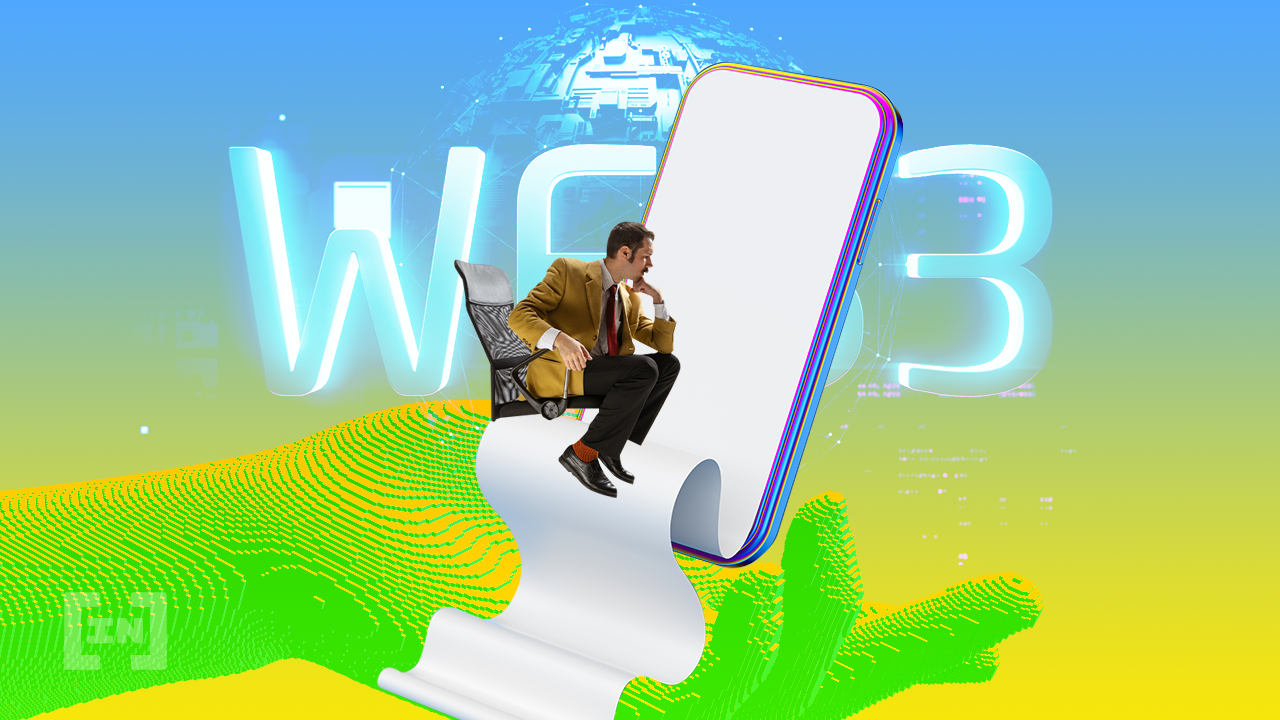
Motivation
Now that you’ve completed your “Hello, world!” smart contract, how about creating another one that focuses on what you can do with its contents?
Project description
Create a smart contract that takes any simple variable (like an integer, character, or boolean) and can both read and write its value. In addition to building this simple storage, define two functions that can increment and decrement its value.
This project challenges you to build smart contracts that are typically read-only to have the ability to modify a variable’s value. Learning how to build this feature can let you update and take control of more complex values in future web3 project ideas like a task, a person’s name, or a transaction’s current time.
Start here
Look at TovarishFin’s Coinmonks article on creating a smart contract storage:
A (Practical) Walkthrough of Smart Contract Storage
Improvement ideas
Extend this project’s functionality by adding more functions and making it more practical. For example, you can customize your storage to hold different denominations of money or the names and ages of famous people!
Skills you will learn
- The basic contents and software architecture of a smart contract
- Deploying smart contracts
- OpenZeppelin, Solidity, and creating simple functions with them
- Creating a front-end user interface (if needed)
Additional resources
Look at these additional resources for other ways to build this project:
3. Cheese touch
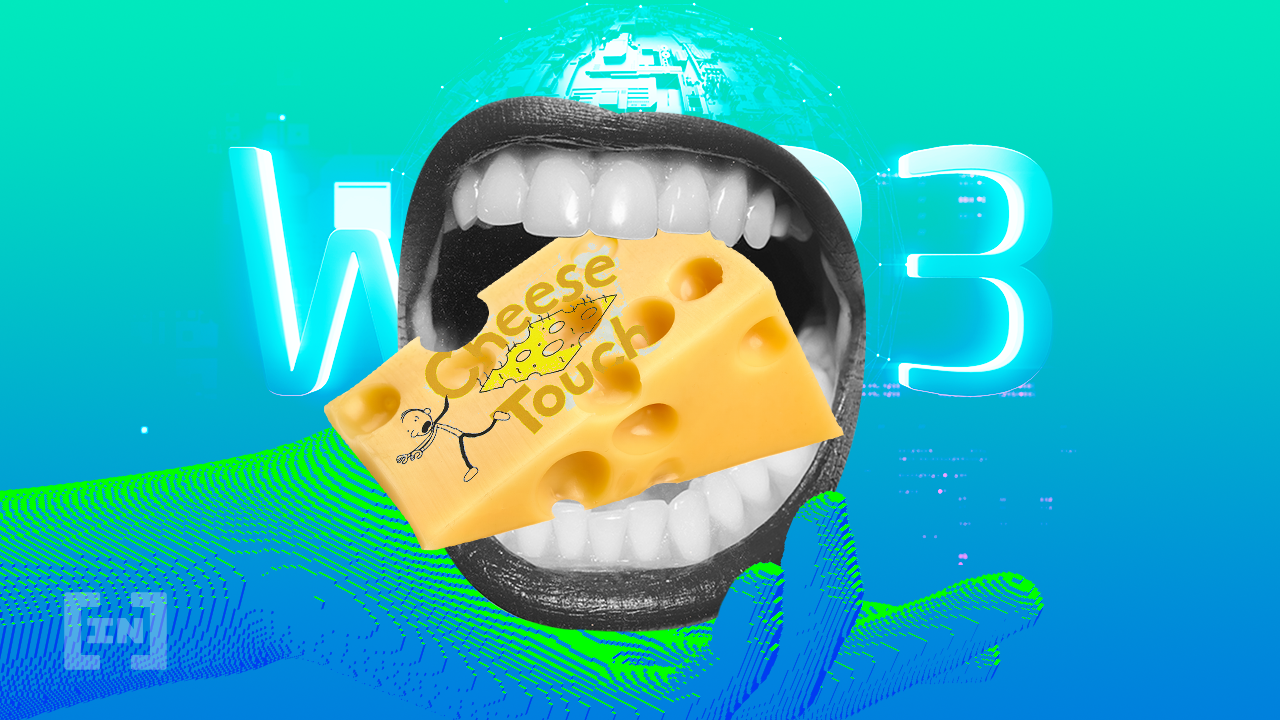
Motivation
Have you ever wanted to create a simple programming game outside of your usual “command-prompt game” like tic-tac-toe, Connect 4, or prisoner’s dilemma? Try building this mini-web3 game that is not only interesting to build but also something fun that you can compete with your friends.
Project description
“Cheese touch” is inspired by one of the popular scenes of 2010’s Diary of a Wimpy Kid. To make it a web3 game, create a non-fungible token DApp for a token that no one wants to own and call this the “cheese touch” token.
To play the cheese touch game, allow only 1 token to be “live” at any time. If no token is live, anyone can create one at any time. Players can then transfer this live token to anyone else. Once this token reaches 24 hours of being live, that token “dies” and the player who still holds it can no longer transfer it to anyone else.
Building this project lets you focus on creating and customizing your own token and keeping track of time.
Start here
To build your project, use the basic web3 programming languages and frameworks. For example, BeratOz01 uses Solidity, Truffle, Ganache, and React.js to build his version of the game.
Improvement ideas
To make this game more competitive (but more difficult to build), why not add a front-end and some game scores to keep track of who has held the most number of “cheese touch” tokens? Maybe you can also incorporate some staking, where players pay for a small amount at the start of the game, and whoever has not “touched the cheese” shares in the reward.
Skills you will learn
- Creating and customizing a token
- Keeping track of time
- Solidity
- Truffle
- Basic game programming
4. Event staking

Motivation
Want to make your parties and events more fun and challenging? This project can help you ensure your attendees will definitely attend them!
Project description
Write a smart contract that lets people pay a small amount to a pool, RSVP for an event, and only the people who attend share in the pool reward. If someone has requested to attend your event but does not come, they lose their staked cryptocurrency.
This project introduces you to the concept of staking, a well-known concept in web3 and decentralized finance. Staking is a way of earning rewards for holding certain cryptocurrencies, so this project gives you a small glimpse into that process.
Start here
View this GitHub project as an example of what you can do:
Sponsored SponsoredSkills you will learn
- Creating a pool of cryptocurrencies (ETH, for example) and distributing them among approved users
- Keeping track of attendees and time
5. An Ether wallet containing ERC20 tokens
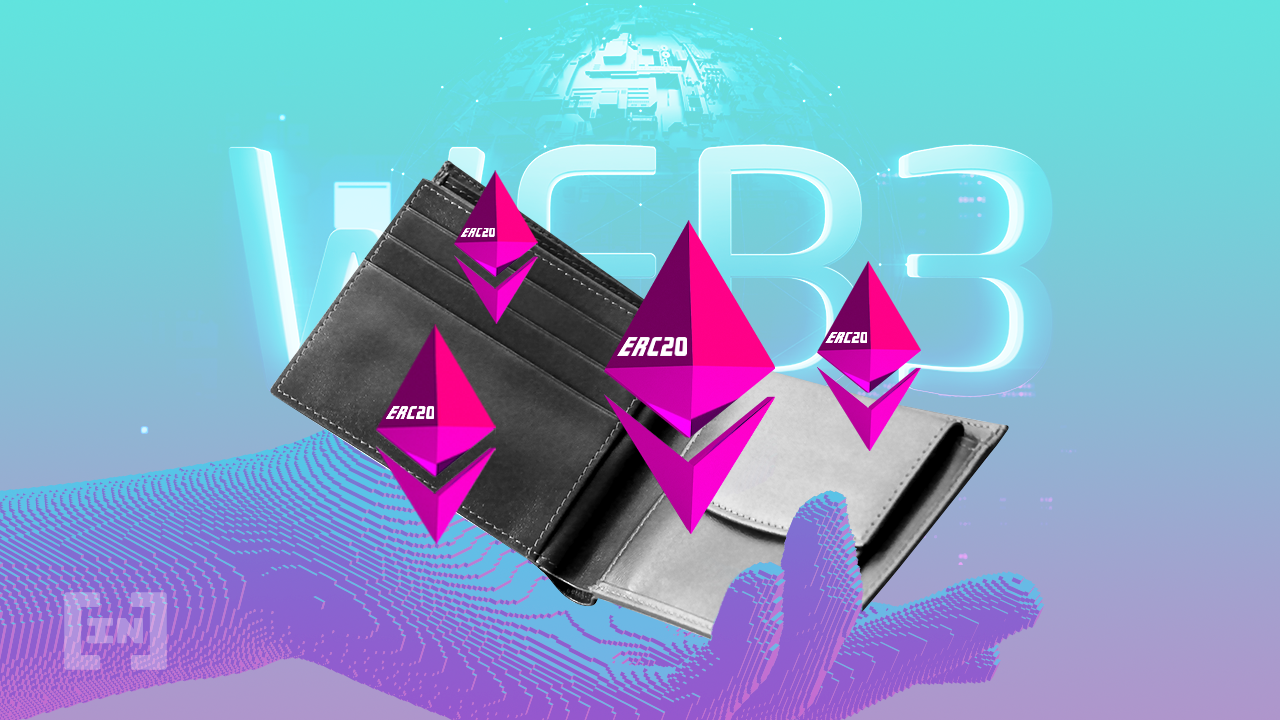
Motivation
Now that you’ve built a few fun projects and “projects of discovery” in creating smart contracts, let’s dive into the fundamental blocks of cryptocurrency: tokens and wallets.
Throughout your learning journey into web3 project ideas, have you ever wondered how web3 tokens and wallets are structured? How are they different from the physical coins you buy items from and the sleek wallet you’ve been owning?
Project description
This project consists of two major steps:
- Create an ERC20 token from scratch, and
- Create a wallet (smart contract) that allows you to spend these tokens.
Start here
Building your token allows you to learn what the standards and structures for creating it are, how you can transfer a token from one address to another, and how to get it listed. Create it using Solidity or OpenZeppelin and use the following teaching guides to help you get started:
How to Create an ERC20 Token the Simple Way
Once you’ve created and listed your token, you can then create your custom-made ETH wallet. Building this project will teach you how to update your Ethers in a smart contract and how to control access to that wallet.
You can use MetaMask to create a standard wallet and use the features that are already available. However, if you want to learn how the wallet is structured and how it communicates with the Ethereum blockchain, you can build it from scratch.
Look at the following resources for some guidance:
- How to Create an ETH Wallet — Full Guide ” Moralis ” The Ultimate Web3 Development Platform
- MyEtherWallet
A short warning: if you want to use your custom-made tokens and wallet to buy, sell, and trade in actual web3 marketplaces and trading systems, get them reviewed and listed first. This intense process usually takes a long time, so ensure that you are well-educated on how to build and maintain a robust set of wallets and tokens.
Skills you will learn
- Using the different frameworks for creating Ether tokens and wallets (like Solidity and Moralis)
- Building the software architecture of these tokens and wallets
- Listing and introducing security features to these items
Additional resources
If you need different versions of creating your wallet and tokens, you can read these articles:
Intermediate-level Web3 project ideas for beginners
Now having some understanding of web3 programming basics and using the different web3 programming tools and frameworks, the next set of intermediate projects can challenge you to build more comprehensive projects or add more complex features to a beginner-level project.
These are some of the skills and competencies you will gain from building these projects:
- Building comprehensive and detailed DApps
- Planning the software architecture and major features and systems of a DApp (like a small decentralized autonomous organization or a voting system)
- Choosing your web3 stack and what tools and languages you would like to use to build your DApps
- Web architecture and the interaction between a front-end app and a blockchain
- Full-stack web development and UX/UI design
6. Web3 to-do list
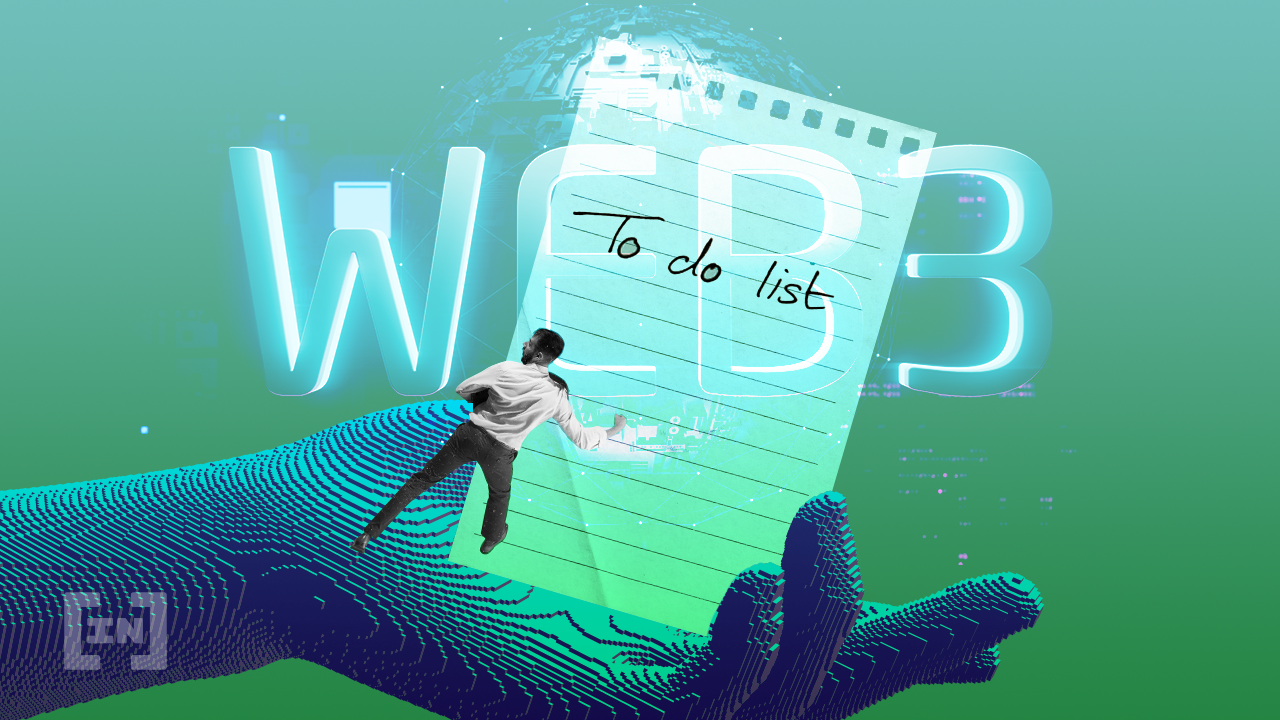
Motivation
One of the most common side-programming projects that you can do outside of school or work is to build a to-do list as either a mobile app or a web app. If you have been planning to make an app like this, why not challenge yourself further by integrating it with blockchain technology?
In fact, if the list lives on the blockchain forever, you may be extra motivated to complete your tasks!
Project description and improvement ideas
Create a to-do list where adding a new item or task means wrapping and adding it to the blockchain. Plan your app’s web architecture so that the logic is written in Ethereum smart contracts and the front-end interacts with the blockchain instead of the usual web back-end and database. Expand your smart contract so that it can add new tasks, modify them, delete them, mark them complete, set deadlines for them, and do other actions involved with creating a to-do list.
While your app may not be as complete and comprehensive as Todoist or Evernote, finishing this intermediate-level DApp gives you a deep dive on how to build a web3 app and gives you a project you can proudly show to tech employers on your next job hunt.
Start here
Take a look at this tutorial from GeeksforGeeks on how to build your decentralized to-do list web app:
Build a To-do List Web Application Powered by Blockchain – GeeksforGeeks
Skills you will learn
- Building full-fledged and detailed project ideas in web3
- Planning the software architecture of a DApp and how the client-side and blockchain can interact with each other
- Creating a front-end user interface
Additional resources
Have a look at these other to-do lists if you want more inspiration:
Sponsored7. A mission-driven DAO
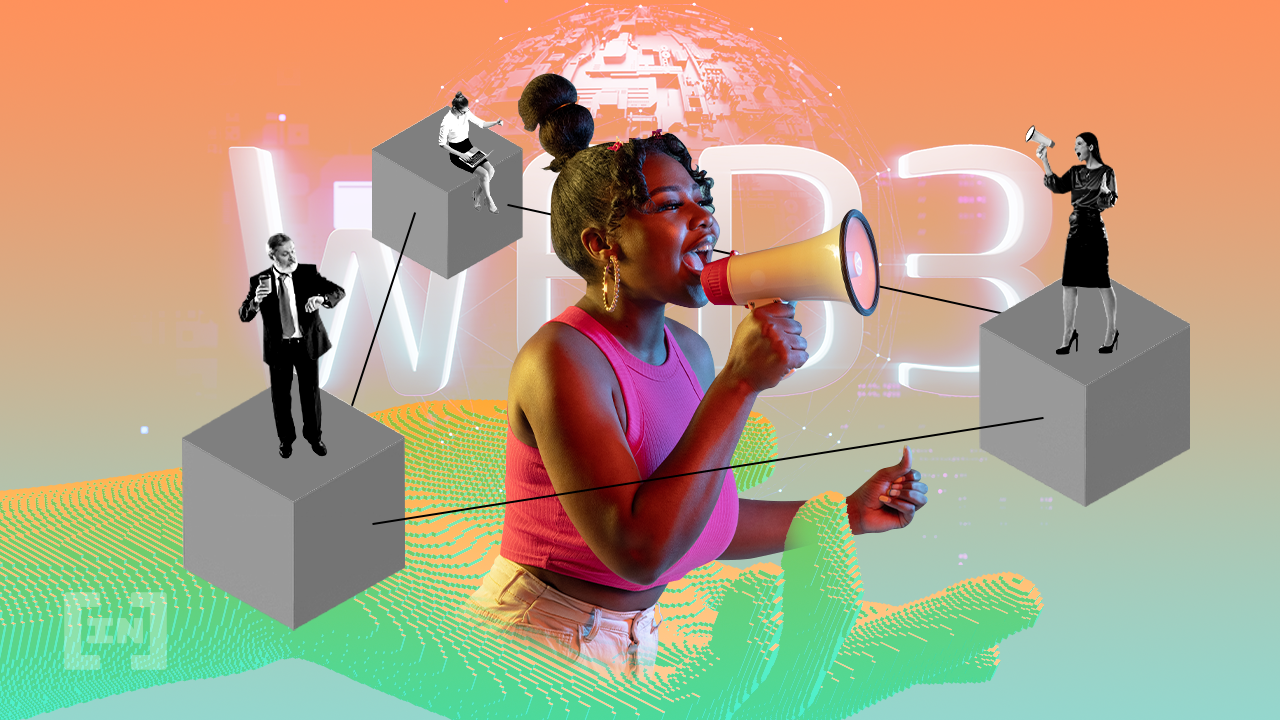
Motivation
A well-known use case brought by the rise of blockchain and decentralization is the practice for organizations to move away from having a centralized executive board to a more decentralized, approachable, and transparent governance.
Decentralized Autonomous Organizations (DAOs) have been implemented by many well-known web3 companies like Uniswap and Aave. In a DAO, users can establish rules as smart contracts, receive funding, create proposals, become voters representing the community, and vote through tokens.
This project gives you a glimpse into creating a DAO, particularly one that offers a good or service to a community or society.
Project description
Launch a DAO around your favorite cause like feeding people in need, protecting the environment, or supporting mental health. Building this project is a good idea, if you want to learn how to build a full-fledged web3 project and the different features and systems that it needs.
Start here
Follow these step-by-step guides to help you kickstart your own DAO using DAO makers like Aragon, Snapshot, and Moralis. You can even code your own DAO using MolochDAO, DAOstack, and web3.js to learn the structure and software design of creating one.
How to Create a DAO in 10 Minutes ” Moralis ” The Ultimate web3 Development Platform
A useful tip: Decide on how far you want to create, implement, and maintain your DAO. The risks associated with creating a DAO just to learn about them are different from those associated with actually starting a DAO, its community, its governance, and its voting system. Ensure that you are well-educated on how to lead and run DAOs.
Skills you will learn
- Creating a DAO, an Ethereum Name Service (ENS) domain, and a voting system
- Deciding on the social and community-based aspects of creating a DAO
Additional resources
To learn more about DAOs, check out these articles:
8. A smart contract that sends 1-hour “salary” tokens

Motivation
Do you want to build your own web3 decentralized payroll system? Use this project to pay your employees in the DAO you created above and take a glimpse on how the mechanics of this system is different from the traditional way companies pay their employees.
Project description
Again, this project consists of two major steps:
- Create a 1-hour “salary” token (or “tokenize your time”)
- Create a multi-send smart contract that sends these tokens to multiple Ethereum addresses
This project challenges you to build advanced and more specific features to regular tokens (time attached to your tokens) and smart contracts (the ability to send tokens to multiple addresses).
Start here
First, launch a token that can represent an hour of an employee’s time. Use OpenZeppelin’s token example contracts, Solidity, Cryptoraves, and Uniswap. Look at this article by Joseph Schiarizzi for inspiration:
I Tokenized my time, and made it an asset you can buy & trade.
Second, create a smart contract that sends these tokens to multiple Ethereum addresses (owned by your employees). As suggested tools, you can use Solidity and Ethereum. Look at the this GitHub repo to get started:
Skills you will learn
- Using the different frameworks for creating your smart contract and tokens (Solidity, Ethereum, OpenZeppelin, Cryptoraves, and Uniswap)
- Building the software architecture of a multi-send smart contract
- Deploying your payroll system and sending tokens to other users (or your employees)
Additional resources
Look at the following tutorials and GitHub repos for more inspiration on building your multi-send smart contract:
9. Polling or voting system
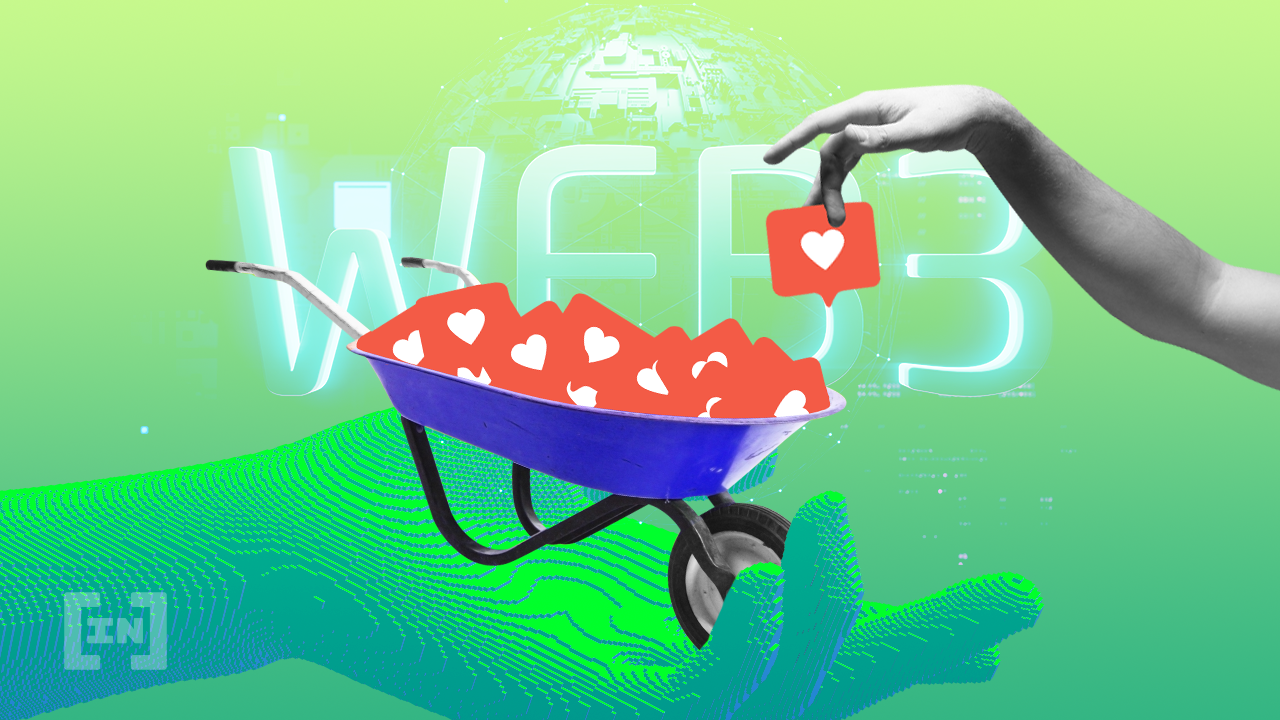
Motivation
Another good way of exploring the benefits of decentralization that blockchain systems provide is in voting and ensuring that the choices made by its voters are legitimate, secure, and given equal opportunity.
If you have been wanting to create a comprehensive web app with full-stack web development, this project is a great opportunity to do that. A user’s flow through the app and voting process, UX/UI design, registration, and security will be major themes while learning how to build this app.
Project description
Depending on how invested you are in building this project, you can either create:
- A simple polling system for your group chats, clubs, or student societies
- A more elaborate and more practical voting system for candidates in your local government
Start here
First, create a smart contract where people can create a new poll, mention different choices, and use their tokens to vote for one of the mentioned choices. Upon creating this polling system, you will learn how to deal with addresses, implement more advanced data structures like hashmaps, and how to deal with time using Solidity. Look at the community polling DApp for inspiration:
To elaborate this project further, create a voting DApp in Solidity where all of the votes and candidate registration processes happen on-chain. Include times for the registration period, voting period, and ending times. Also, include how a candidate can sign up and how they can vote once during the voting period.
Build your voting system with security and tight logistics in mind. Ensure that each Ethereum address correctly identifies its user, each user is eligible and can cast only one vote, and that votes are accurately recorded and counted.
Look at the following resources to get started:
Skills you will learn
- Full-stack web development and UX/UI design
- Planning a voter’s flow through your app from registration to knowing the results of the poll or election
- Planning your app’s web architecture, including data structures
- Dealing with registration, addresses, time, and security
- Solidity
Additional resources
Look at these other variations of polling and voting systems to get a better idea of how to build them:
Covalent-inspired Web3 project ideas
Building this next set of projects will help you learn more about web3 data middleware platforms like Covalent. The tools and endpoints it offers help developers start their learning journey in web3 and kickstart various web3 project ideas.
10. NFT collection dashboard

Motivation
Another popular use case for web3 is the buying and selling of non-fungible tokens (NFTs), which you may have seen around the news and the Internet. NFTs are non-interchangeable units of data stored on a blockchain that can be sold and traded. Photos, songs, trading cards, artwork, and collectibles can be sold and bought as NFTs in marketplaces such as OpenSea and Rarible.
Project description and start here
Try exploring, buying, and owning some of your favorite NFTs. Then, use Covalent’s ready-made NFT collection dashboard template to run your own dashboard for viewing your personalized collection! Just plug in your own Covalent API key, dashboard title, dashboard header banner, and you’re good to go.
You can display a floor price graph, a preview of the first five NFTs in the collection, and the ranking of your specific collection in the global view of all NFT collections on a specific blockchain.
Once you’re done, you can share your dashboard with your friends and compare it with their dashboards!
Skills you will learn
- NFTs and how to buy and view them
- Personalizing Covalent’s NFT collection dashboard template
- Learning about Covalent’s unified API
11. XY=K DEX dashboard

Motivation
web3 has also introduced the concept of decentralized finance and decentralized exchanges (DEXs), where users can swap assets and provide liquidity from their own wallets instead of a centralized exchange (CEXs). To get a complete and comprehensive understanding of what DEXs are, check out this article I wrote last month:
The developer’s complete guide to DEX data using Covalent
Project description and start here
Use Covalent’s ready-made DEX dashboard powered by XY=K’s endpoints to view your favorite DEXs! Just plug in your own Covalent API key, dashboard title, and dashboard header banner, and you’re set.
You can display both blockchain and DEX selectors, a DEX token summary, and details of the asset pairs traded on the DEX. This template powers multi-chain DEX dashboards by using the XY=K suite of Covalent API endpoints.
Once you’re done, you can share your dashboard with your friends and compare it with their dashboards!
Skills you will learn
- DEXs and how to swap assets and provide liquidity
- Personalizing Covalent’s XY=K DEX dashboard template
- Learning about Covalent’s unified API
12. Custom data feeds for smart contracts using Covalent’s API
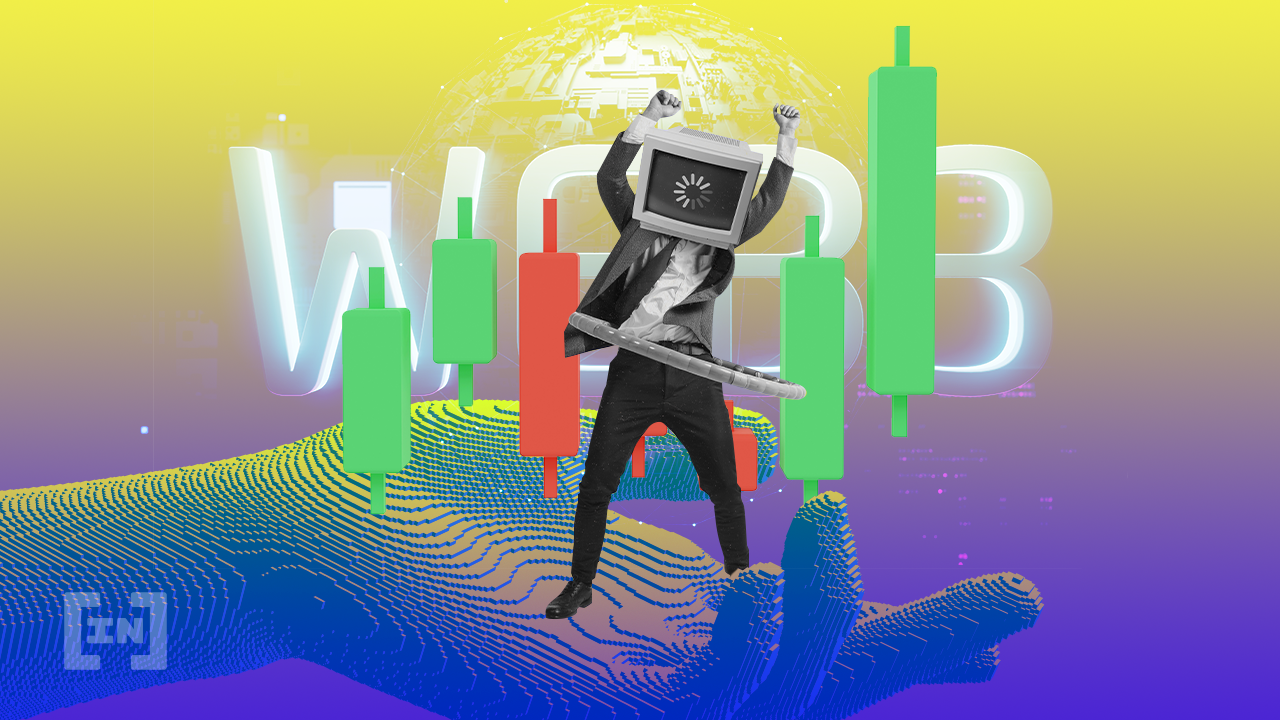
Motivation
While building your NFT collection and DEX trading dashboards, have you ever wondered how you can retrieve real-world data feeds for different assets? You can connect your smart contracts to these feeds using oracles like Chainlink.
With Chainlink, smart contracts can access any external data using external APIs including the Covalent API.
Project description and start here
Follow these code examples for creating data feeds for any on-chain data. You can use data feeds on NFT collection market caps, DEX trading volumes and liquidity, and multi-chain log events.
Next, if you would like to create your own data feed, follow the steps for doing so under the “Use the Covalent API with Chainlink” section.
Skills you will learn
- Creating your own custom data feed
- Understanding more about Chainlink
- Solidity, functions, and inheritance
Your web3 journey is just starting
With these web3 project ideas, you’ll have a good foundation using which you can jump onto more complex ideas. You’ll also learn new concepts related to blockchains and crypto, and that could prove useful for your career as well.
There’s much else you can do now that you have the basics down, You could participate in a web3 hackathon and earn bounties, joining a web3 developer community like that of Covalent’s Alchemist program, or just continue to learn more about smart contracts and perfect your solidity skills.

